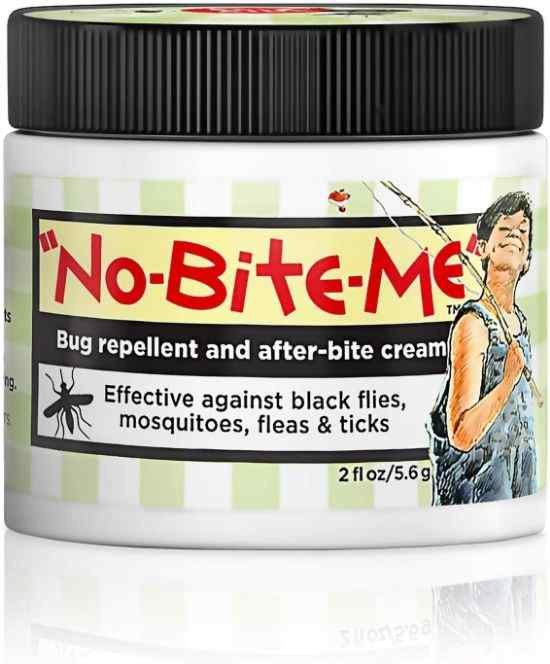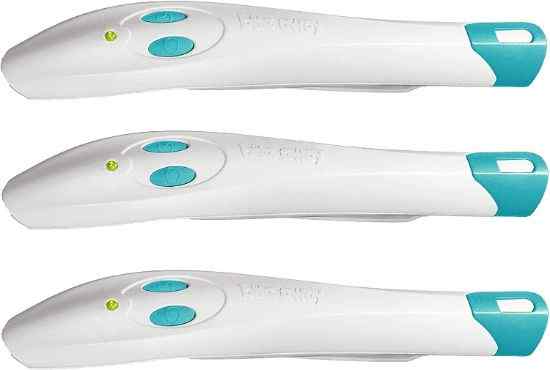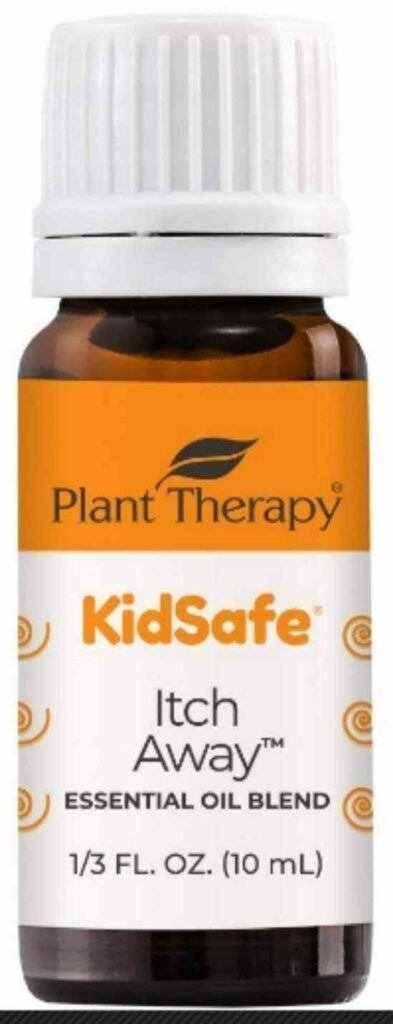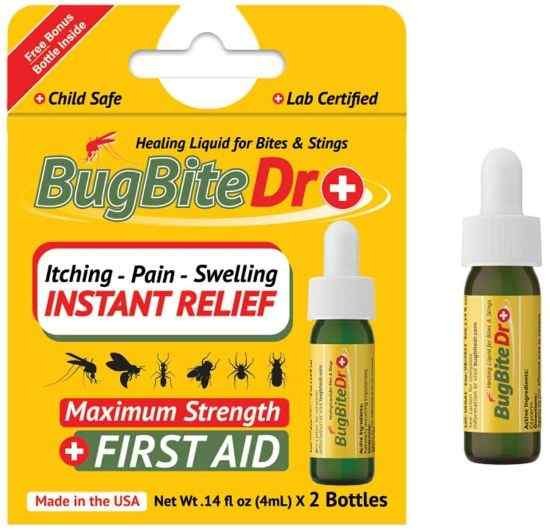Do fleas bite humans? What do flea bite symptoms look like on humans (e.g., adults, toddlers, Baby, Kids, and Children)? You will learn about what causes fleabites for humans, where they bite the most, the danger of flea bites to kids and babies, why they bite certain people and not others, reasons you get bitten on ankles, and how long the symptoms last on humans, etc.,
What do flea bite symptoms look like on humans? The flea bites look like tiny red bumps arranged in clusters of more than three but usually on a straight line with a red ring around the bite area.
Fleabites can happen on any part of the human body, but the most common bite site on your body is your legs, especially your feet, calves, or ankles. Fleabites can irritate you for a while but may not harm you. However, flea bites can be dangerous if you get bitten by infected fleas or contaminate the spot while scratching the itch.

Related Articles
- Flea Bites on Dogs: What Fleabites on Dogs (Symptoms) Looks Like?
- How to Catch and Use Sand Fleas (Mole Crab) for Baiting Fish
- Flea Bites On Cats: What Flea Bites Symptoms Look Like on Cats?
- What Sand Fleas/Mole Crabs (“Emerita”): All You About Fleas In the Sand Beach
- What Sand Flea Bites (Tungiasis) Look Like? Symptoms, Prevention, and Treatment
Recommended Flea Repellent & Anti Itch Creams
SALLYEANDER No-Bite-Me – (Safe for Kids and Infants)

bite away® – Bite Symptom Pain & Itching (FDA-Cleared and Dermatologist-Tested)

Plant Therapy KidSafe Itch Away Essential Oil Blend (Undiluted Therapeutic Grade)

Lotrimin Ultra Itch Cream (Clinically Proven to Cure Most Jock Itch)

TEA TREE OIL BALM -100% All Natural (Great Cream for Skin Irritations like Rashes & Itches)

Tecnu Calagel Anti-Itch Gel, Maximum Strength Itch Relief for Bug Bites & Stings

After Bite Advanced Anti-Itch Relief (Pack of 4)

Benadryl Extra Strength Anti-Itch Gel (Histamine Blocker for Relief Itches & Insect Bites)

BugBiteDr Insect Bite Relief Oil – Liquid Gel for Bites Itching & Stings Pain (Safe for Kids & Pets)

Do Fleas Bite Humans?
Yes, fleas do bite humans. Why will flea bite on humans? Fleas are parasites because they feed on the blood of animals and mammals. You will be at risk of getting bitten by fleas if you keep pets at home, especially if you live and spend time outdoors.
It is essential to know that fleas will always prefer the blood of pets or animals with many furs as their host. Some fleas like to feed on the blood of dogs and cats, but they will happily feed on warm-blooded humans, and that includes you.
How Humans Get Fleas Bites without Pets at Home
You don’t need to keep pets and domestic animals to attract fleas indoor and into your homes. Wildlife such as opossums, squirrels, skunks, raccoons, and even rats can transport fleas and their eggs into your apartments. It can be easy for rats and mice to transport fleas into any home, primarily via your attic or chimney.
Fleas bite humans most via the feet, legs, and ankles. They often bite three times in a straight line, usually breakfast, lunch, and dinner. You can see why you don’t need to have pets in your home to get fleabites.
Many scientific studies and research findings on how high and fast fleas can jump (especially the Journal of experimental biology). Though they don’t have wings, they can fly up to 40 to over 100 times the length of their body, and they can do up to a distance of 2 feet in height.
The implication is that fleas can jump on you while taking a walk along with a bushy lawn. It is how fleas are transported to homes that lead to a flea infestation.
How Serious are Fleabites on Humans
Should you be worried about flea insect bites? How dangerous is it to get bitten by fleas? Can humans can very sick of fleas bite?
Flea bites can rarely cause significant harm. Getting bitten by flea may cause some irritation for s short time. The truth is that fleas bites for humans can be very dangerous because you may be infected with diseases that can be fatal and serious.
Fleas bite in humans can be excruciating with itching (especially on the human scalp). Over scratching can damage and expose your skin to secondary bacterial infection, an allergic reaction to fleabites is widespread.
Suppose you get bitten by an infected flea (i.e., a flea-carrying disease). In that case, it can make you sick, primarily if the infection can be transmitted via flea bites in humans such as plague, cat scratch fever, typhus, or flea-borne spotted fever.
Another issue is that flea bites in humans can also be infected in various ways, leading to many complications and severe health issues. It may be tough to eliminate fleas in any home because they can always survive for over 100 days without a host and sucking blood.
Why Do Fleas Bite Humans?
Fleas, those tiny blood-sucking pests, have a singular purpose when they bite humans: to feed. Being blood feeders, fleas, particularly the females, seek out any available source of mammal blood, whether it’s from pets, wildlife, or yes, even humans, to nourish themselves and lay eggs.
These pesky insects aren’t discriminatory when it comes to their feeding habits. They’ll latch onto any exposed skin they come across, including legs, ankles, elbows, and armpits. And if given the opportunity, they won’t hesitate to bite babies or children who lack proper protection.
Why Do Fleas Like to Bite Certain People?
There are so many questions online about fleabites and human blood. You can see questions such as:
- Why do fleas bite me and no one else?
- Do fleas like me so much?
- Why do fleas only bite me?
- Do fleas only bite females?
- Can fleas bite one person and without another?
- Why do fleas only bite my daughter?
- Why am I getting bitten by fleas but not my partner?
- Etc,
According to the University of Missouri, MU Extension’s publications, the simple answer to all the above questions is this; fleas are not attracted to specific humans. But people are highly susceptible to fleas bites in different ways than others. Humans react to fleas bites in different ways. The human body system varies from person to person in handling the impact of the flea saliva injection while feeding on human blood.
It is all about individual body chemistry and allergies to a flea bite. The typical reaction of humans to flea insect bites is the red, itchy spot on the skin. But some people are highly susceptible. Some people may experience severe irritation in a flea-infested home, while other people will show no sign of fleabites. Fleas are parasites and blood-feeders. They will not discriminate between hosts. Any human blood is great for them, and there is no special blood for fleas in any location of the world.
How Dangerous is Flea Insect Bites on Kids and Babies?
Are flea bites harmful to children? Flea bites are not dangerous to babies and kids (i.e., young children in general). But fleas can bite babies and kids to feed on their blood. Only children and toddlers who are allergic to flea bites may have a bad reaction, resulting in itching and swelling.
The flea insect bites itch may be unpalatable to the kids. Hence they should be protected from contaminating the red bumps bites spots. The disturbance of the itching site can lead to the transmission contamination of open skin. Ensure you contact your pediatrician immediately.
What Do Flea Bites Look Like on Humans?
What are flea bite symptoms on humans? Flea bites on humans look like multiple clusters of small discolored but red swollen spots with round-shaped bumps on the skin. It is often arranged in groups in the form of a non-follicular pattern. The area bitten on the skin by a flea can result in bumps round-shaped but with small punctures at the middle of the spots that feel firm to the touch. The skin reaction to flea saliva causes those signs and symptoms.
The best way to identify fleabites symptoms on humans (even if they are mild) is to look out for three or more clusters of small red bumps or can appear in a straight line on your skin. The bumps are tiny, with a red halo at the center of the bites. The specific location that a flea can bite you while they are feeding on your blood is:
- Around your lower legs,
- Feet,
- Waist,
- Armpits,
- Behind the knees,
- Ankles, and
- Increases of your elbows,
The flea has access to you because they often live in your beds, chairs, carpets, floorboards, and hidden locations in homes that can contact your skin.
Flea bites on humans will often induce papular urticaria disorder that causes recurrent papules (skin lesions) and a chronic hypersensitivity reaction at the bitten spots on your skin.
The bites can be extremely itchy and may sometimes come with bleeding. The severity of the itch will depend on the individual immune system. It is crucial to note that most people often go through extreme itchiness.
If you are allergic, the flea-bitten spot may develop rashes or hives. This reaction can take up to a whole day to occur (i.e., 24 hours after the fleabites).
Flea bites on humans can spread all over your body, especially for people with dense hair on the chest, leg, head, armpit, etc.
Where Do Fleas Bite Humans the Most?
Flea bites on humans often occur on the lower extremities such as the legs, ankles, feet, calves, lower legs. Also, fleas bites in humans can take place on the scalp, chest area, head, groin, breasts, waist, and armpits. It is very uncommon for bites to take place above your knee, except you are mostly lying and sitting on the bare floor.
Why Do Fleas Bite Humans on Ankles
Below are various reasons why fleas bite on human ankles most of the time:
***Easy Access to Ankles for Fleas Bites in Humans***
Why do fleas bite humans on ankles most of the time? Fleas bite ankles often because it is the body area that can be reached easily. Fleas can only jump to get to their host, and when they do, the part of the body that can be accessed easily is the ankle (considering the height of their jumps). Little contact with the skin will make them bite to feed on your blood right away.
Most fleas can only jump at an average maximum height of 20 cm. This height favors most human ankles for easy flea access and bites.
***Ankles Have Skin Exposed for Easy Fleas Bites***
The most area of the skin that is exposed for fleas bites for humans are your ankles. Most times, your pants and socks won’t cover your ankles adequately, leaving space for fleas to bite you around the ankles.
Long enough trousers and socks can help get rid of and prevent fleas biting via ankles.
Why Fleabites Occur High Up in Humans
Most of the time, flea bites for humans take place below the knees, and the upper legs are also too far from the ground to experience flea insect bites under normal conditions. In extreme situations, fleabites can still happen in humans at the upper body like the waist, upper legs, scalp, forearms, or arms.
How can you get fleas to bite on human upper legs? Fleas can have access to any part of your body if you like sitting on the floor in any flea infestation environment, and fleas can jump to any part of your body to bite you If you hold an infested pet in your arms.
What Causes a Flea Bite?
Flea bites occur in humans when fleas bite the skin in the process of sucking the host’s blood to feed. Fleas are a blood-sucking parasite that depends on the blood of mammals to survive.
The bite happens with the flea piercing-sucking mouthparts that can pierce your skin and locate the blood vessels to make sure that the blood flows so it can feed. Flea has three stylets that can penetrate your skin as a blood-feeding insect. The two outer stylets work together and saw into your skin to cause the bleeding.
Fleas, like most of the blood-feeding insects, have piercing-sucking mouthparts. A flea’s mouthparts are three stylets that pierce the host animal’s skin. The two outer styles work in unison to see the skin, causing bleeding. The combination of the three makes up the feeding tube that sucks the blood. The third stylet is then inserted.
The injection of saliva into the wound by fleas prevents blood clotting. Your body will respond to the injected saliva by releasing “Histamine.” It is the “Histamine” that causes the formation of red, itchy bumps around the location of flea insect bites on your skin.
Fleas can get to you via your pets at home, rodents like rats, or wildlife in the nearby forest. They can also jump unto you from infested locations while transporting them to your homes.
How Long Do Flea Bites for Humans Take to React and Start Itching?
What happens when a flea bites humans? When a flea injects saliva into the blood system (while sucking your blood), the body will note and register the saliva as an allergen. The immune system will respond by sending a chemical called “histamine” to remove the strange allergen in your body. Histamine is why flea bites itch. It is the “histamine” that is the cause of the fleabites, bumps, and intense itching.
How Long it Takes a Flea Bite to Start Itching?
Most people come up with reddish welts within a day or two (under 48 hours). What determines how long a flea bite starts to itch is how fast your body system sends the “Histamine” in response to the flea bites and neutralizes the flea saliva injected into your body stream.
Your allergic reaction to the flea insect bites determines the rate at which you feel the itching and when it goes. Itching often follows around the feeding area. The bitten area will soon form red bumps like welts and hives. It can grow in size within a week.
Fleabites show up days later because most people do not feel the bites when they happen. The body allergic reaction and the release of “Histamine” to fight back and protect your body drag the responses for days until it later shows up.
Signs and Symptoms of Flea Bite on Humans
Many people may not be aware that fleas have bitten them. When they see the signs and symptoms of flea bites on their skin, they ask questions. There is a difference between flea bites infection symptoms and the actual signs and symptoms of a flea bite on human skin?
Symptoms of flea bite include:
- The spot of the bite will be very itchy.
- A red color swollen lump will form in less than an hour of the bite
- The swelling can develop into a small wound like a blister after a day plus.
- Fleas bites often take place on your legs, ankles, or feet.
Most fleas bites may cause just mild symptoms, depending on the individual and natural body immune system to react to the bites. As a result of extreme itchy and pain, the bite spot may be contaminated, leading to secondary infections due to scratching and flea dirt. Within two weeks, you may start seeing fleas bite infection symptoms like “flea-borne typhus.”
Most people will depend on the Signs and Symptoms of fleabites to know that they are already bitten and exposed to flea dirt.
The signs and symptoms secondary complications of fleas bites are:
- Vomiting
- Stomach pain
- Cough
- Fever and chills
- Rash
- Loss of appetite
- Nausea
- Body aches and muscle pain
It is important to contact your doctor as soon as you start seeing fleas bites’ first signs and symptoms. You are not to get infected before seeing your doctors. It is infrequent to develop a severe illness due to flea insect bites; most people recover quickly and entirely even without treatment.
However, complications and resulting untreated disease can lead to severe illness that can affect major organs such as lungs, liver, brain, heart, and kidneys.
Symptoms of Flea Bites on Toddler (Baby), Kids, and Children.
Flea bites on children look tiny, red bumps, welts on the skin, and extremely itchy. There is no significant difference between fleas bites in adult humans and toddler (baby)/children.
It can be excruciating and discomfort to the kids, and excessive scratching may lead to contamination and increase the risk of secondary fee bites infection of the toddler.
It is highly recommended that you contact your family doctor for diagnosis and treatment to avoid secondary infection of flea insect bites.
.The symptoms and signs of a flea bite on toddler (baby)/children include:
- Serious itching
- The bite site will develop small but harsh red bumps in less than an hour.
- The child may experience pain and swell at the spot of the bite.
Please know that each child’s flea bite allergic reaction will determine the severity of the symptoms experienced by the children.
How Long Do Flea Bites Symptoms Last on Humans?
People’s allergic reaction to fleabites (flea saliva) causes intense itching, and those painful welts on the flea bites spot humans. The human skin will react to flea bites, an injection of flea saliva to the skin by showing those red and swollen bumps on the human skin (the common area is flea bites on the human scalp).
Please know that most fleabites are harmless in humans will automatically fade away in days. They often clear up after some hours and days depending on how your body’s immune system reacts to the bites and much you can avoid scratching them.
Excessive scratching will get the fleabites infected and extend the number of days required for the healing process. The individual allergic reaction to flea insect bites determines the number of days the symptoms will be around.
What Infected Flea Bites Symptoms Look Like on Humans?
What are the look and symptoms of infected flea bites on a human? Or how do you know if your flea bites are infected? An infected bite on a human will turn red, feel warm, swollen, pus formation around the bite, and be extremely painful. If it gets complicated over time, you may come up with symptoms like typhus or bubonic plague, hives (i.e., urticaria), raised welts on your skin, and difficulty in breathing.
It is essential to know that hives result from allergic reactions and irritation in people sensitive to flea bites. If you have allergic reaction symptoms and are unwell, you need to see your doctor.
Bacteria can get transmitted into your body system via fleabites. The risk of contracting the infection due to flea bites is very low. However, there are different ways fleabites may become infected. These are three common ways flea can infect a human via flea bites:
Scratching The Bitten Spots
When a flea insect bites humans, it introduces a small itchy lump that penetrates the skin and causes irresistible itchings and irritation. Scratching the itching lump may break your skin, eventually allowing bacteria from your hands to contaminate your loose skin (i.e., the flea-bitten spots).
Fleabites on Human Around Swollen Glands
Flea bites on humans can also become infected with bacteria if you have flea bites around other swollen glands. Infected flea bites can become red with pus-filled, it can cause you much pain and discomfort. You need to contact your doctor at this stage.
If You Get Bitten By Fleas with Flea-Borne Typhus
Suppose you get bitten by a flea that is already infected when they bite an infected home, pets, or animals like dogs, rats, cats, or opossums. As soon as an infected flea insect bites a person, the bites will instantly break the skin and result in infected wounds. Flea occasionally carries diseases caused by another bacteria known as Rickettsia typhi (i.e., flea-borne typhus).
Contamination of Bitten Wound with Fleas Poop
Fleas have been discovered to contaminate human skin with their poop when they feed on their host. Fleas poop, also referred to as flea dirt, is rubbed with the bitten spot on the skin (i.e.fecal contamination) and other wounds causing instant flea infection. This made the infected flea feces to be scratched into human open wounds.
It is one major way fleas spread disease via infected flea bites on humans.
Conclusion: What Do Flea Bites on Humans Look Like?
You now know all about the signs, symptoms, and what flea bites look like on humans such as adults, children, kids, babies, and even toddlers.
You have also discovered how dangerous it is for a human to get bitten by this blood-feeder parasite (flea). Don’t forget why you can get fleabites even without having them in your home.
So, what do flea bites look like on humans? Kindly drop your comment about your opinion of flea bites in the United States and the rest of the world.
Flea Bites on Humans: What Do Flea Bites Look Like
Related Contents
- 9 Common Types of Cockroaches Species In the US: Identification Tips
- Flea Bites On Dogs: What Do Fleabites Symptoms Look Like on Dogs?
- What Do Sand Flea Bites Look Like? Symptoms, Prevention, and Treatment – Tungiasis
- What Do Sand Fleas Look Like? Top Discoveries About Fleas in Sand
- 53 Rare Fascinating Facts About Cockroach: Unbelievable Roaches Facts